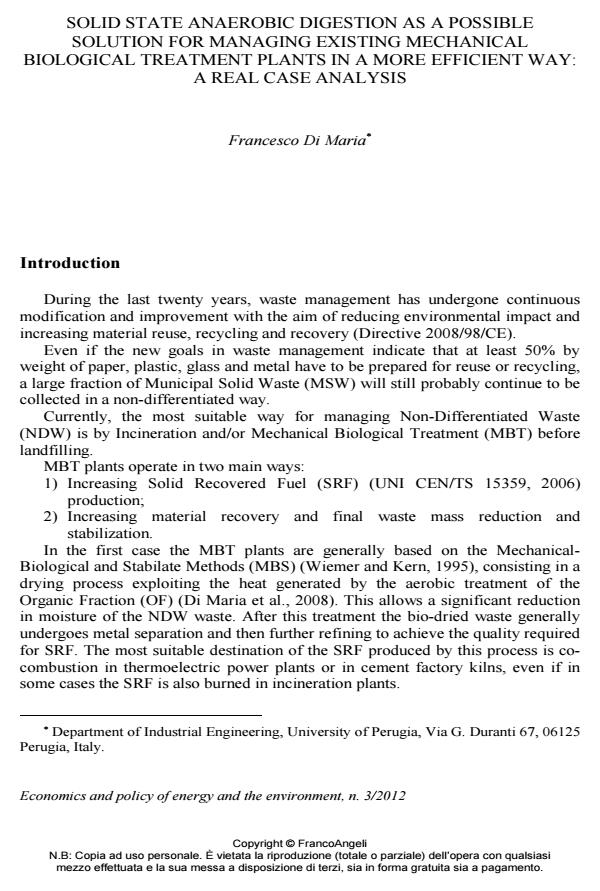Solid state anaerobic digestion as a possible solution for managing existing mechanical biological treatment plants in a more efficient way: a real case analysis
Titolo Rivista ECONOMICS AND POLICY OF ENERGY AND THE ENVIRONMENT
Autori/Curatori Francesco Di Maria
Anno di pubblicazione 2012 Fascicolo 2012/3 Lingua Italiano
Numero pagine 14 P. 37-50 Dimensione file 859 KB
DOI 10.3280/EFE2012-003004
Il DOI è il codice a barre della proprietà intellettuale: per saperne di più
clicca qui
Qui sotto puoi vedere in anteprima la prima pagina di questo articolo.
Se questo articolo ti interessa, lo puoi acquistare (e scaricare in formato pdf) seguendo le facili indicazioni per acquistare il download credit. Acquista Download Credits per scaricare questo Articolo in formato PDF

FrancoAngeli è membro della Publishers International Linking Association, Inc (PILA)associazione indipendente e non profit per facilitare (attraverso i servizi tecnologici implementati da CrossRef.org) l’accesso degli studiosi ai contenuti digitali nelle pubblicazioni professionali e scientifiche
The exploitation of Mechanical Biological Treatment is quite diffused for treating fractions of Non-Differentiated Waste. A large part of the Italian Mechanical Biological Treatment facilities operate mainly by reducing and stabilizing the Non-Differentiated Waste mass before landfilling. This way of managing Mechanical Biological Treatment can be improved by the adopting a new treatment section, based on the Solid State Anaerobic Digestion process. In this way, the Waste Organic Fraction arising from the mechanical sorting of the Non-Differentiated Waste can be treated before the aerobic stabilization section of the existing Mechanical Biological Treatment. In Italy more than 40% of the working Mechanical Biological Treatment facilities have features suitable for being upgraded with a new Solid State Anaerobic Digestion section. In these plants the amount of the rapidly biodegradable fraction is about 1,100,000 tonnes per year, leading to the production of about 300 GWh of renewable energy. The results concerning a real case study show that, with the adoption of a new Solid State Anaerobic Digestion section, about 150 kWh of electric energy would be able to be produced per each tonne of Waste Organic Fraction. Furthermore, there would be a significant reduction in the Organic Load Rate [kgVS/m3*day] for the existing aerobic section of the plant, leading to additional savings of 160-320 kWh per day, depending on the amount of Waste Organic Fraction diverted from the Solid State Anaerobic Digestion. Results from the economic analysis show that the Solid State Anaerobic Digestion treatment cost ranges from about 6 up to 23 € per each tonne of Non-Differentiated Waste entering the existing Mechanical Biological Treatment plant.;
Keywords:Anaerobic digestion, Economic analysis, Energy, Mechanical biological treatment, Solid state, Waste organic fraction
Jel codes:O31, Q42, Q53
Francesco Di Maria, Solid state anaerobic digestion as a possible solution for managing existing mechanical biological treatment plants in a more efficient way: a real case analysis in "ECONOMICS AND POLICY OF ENERGY AND THE ENVIRONMENT" 3/2012, pp 37-50, DOI: 10.3280/EFE2012-003004